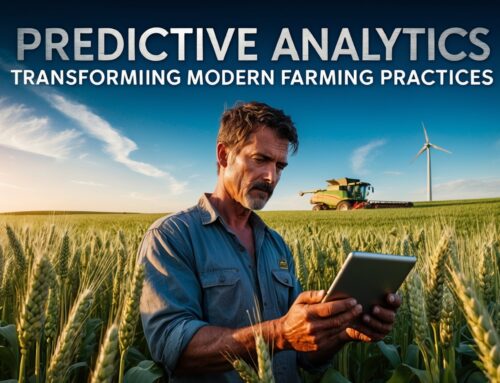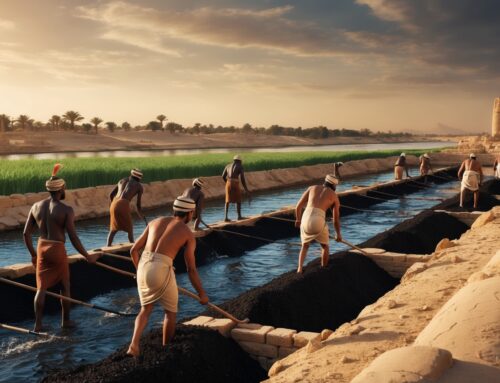Soil moisture sensors can be a game changer for farmers, helping them make smart decisions about irrigation. However, many farmers are deterred by the high price tags associated with these devices. In this post, we’re breaking down why soil moisture sensors are so expensive and why Terrestream’s Irrigauge provides a high-quality, affordable alternative.
Why Are Soil Moisture Sensors So Expensive?
Soil moisture sensors are highly specialized pieces of technology, and several factors contribute to their often hefty price:
1. Advanced Technology
Soil moisture sensors rely on advanced technology to measure water content accurately. High-end sensors often use sophisticated electronics to measure dielectric constants, resistance, or other factors that correlate with soil moisture. These sensors need to be highly sensitive to subtle changes in soil conditions, requiring the use of precision components and calibration methods. Additionally, these sensors incorporate complex algorithms to process the data collected, which allows for more precise and actionable insights. The technology used must be robust enough to handle data variability caused by different soil compositions, temperatures, and external factors such as rainfall and irrigation. This level of sophistication adds significantly to the overall cost, but it ensures that farmers receive reliable and detailed information to make informed decisions about their irrigation practices.
2. Calibration and Testing
Calibration is crucial to ensure soil moisture sensors provide accurate readings. This often requires replicating various soil types, moisture levels, and environmental conditions to achieve precise calibration, which can be a time-consuming and expensive process. At Terrestream, we’ve replicated all twelve major soil types in our lab and calibrated each Irrigauge sensor to ensure accuracy for all these conditions. Calibration must also take into account variations in soil salinity, temperature fluctuations, and seasonal changes, all of which can impact moisture readings. For many companies, this kind of calibration requires extensive testing facilities and expertise, driving up costs. Moreover, ongoing recalibration is sometimes necessary to maintain sensor accuracy over time, adding to the overall expense of maintaining a reliable soil moisture monitoring system.
3. Durability and Weather Resistance
Farming environments are tough. Soil moisture sensors need to be able to withstand heavy rain, heat, dust, and other environmental stressors without breaking down. Building sensors that can endure these conditions requires high-quality, durable materials, which adds to the cost. At Terrestream, our Irrigauge sensors are made from weather-resistant materials that ensure they keep functioning through all seasons. In addition to weatherproofing, our sensors are designed to resist physical impacts, UV radiation, and potential chemical exposure from fertilizers and pesticides. This robust construction guarantees that our sensors remain operational and accurate, even in the most demanding farming environments, providing long-term reliability and reducing the need for frequent replacements.
4. Communication and Data Infrastructure
Soil moisture sensors need to communicate data effectively, either through wired connections or wirelessly to a central system. Many modern systems, including our FieldLink and FieldHub, use LoRa technology to relay sensor data to a hub that connects to a server via LTE. This kind of infrastructure involves specialized hardware and software development, contributing to the high price tag of many moisture sensor systems. The data collected must be transmitted securely, often requiring encryption protocols to protect sensitive farm data. Additionally, the system must be designed to handle large amounts of data from multiple sensors in real time, necessitating reliable network infrastructure and sophisticated software algorithms to ensure seamless data flow and integration with dashboards and analytics tools.
5. Research and Development Costs
Developing a new soil moisture sensor requires significant R&D investment. From prototyping to rigorous testing and bringing the product to market, these steps are costly. Many companies pass these costs on to consumers through high sensor prices. R&D involves not only the creation of new sensor technology but also the development of reliable software, field testing in diverse environments, and ensuring regulatory compliance. These processes require highly skilled engineers and agronomists working together, which further adds to the overall costs. Terrestream’s approach has been different: we use cutting-edge, cost-effective technologies without compromising quality, allowing us to keep our prices low. By focusing on efficiency in design and leveraging modern manufacturing techniques, we’ve managed to develop a solution that meets high standards without passing excessive costs onto farmers.
Why Terrestream’s Solution is Affordable
Terrestream’s Irrigauge soil moisture sensors stand out from the competition by offering a high-quality solution at an affordable price. Here’s how we manage to keep our sensors affordable:
1. Streamlined Manufacturing
All of our Irrigauge sensors are assembled in the USA using efficient and streamlined manufacturing processes. By keeping production close to home, we maintain tight quality control while reducing costs associated with importing parts or outsourcing labor. This allows us to pass those savings on to our customers.
2. Modular Design
Our soil moisture system is designed to be modular. Each FieldLink data logger can connect up to four Irrigauge sensors, meaning farmers only need to purchase what they require for their field size. If one sensor needs replacing, it’s easy and cost-effective to swap out, rather than replacing an entire system.
3. No Subscription Fees
Many soil moisture monitoring systems come with ongoing subscription fees just to access your own data. At Terrestream, we believe that farmers should have full access to their data without unnecessary recurring fees. Our Terrestream dashboard is subscription-free for the first year, giving farmers the tools they need without the financial burden.
4. Built to Last
Durability doesn’t have to mean exorbitant prices. We use high-quality, weather-resistant materials in our sensors, ensuring they have a long operational life even in the harshest conditions. By engineering our sensors to last, we reduce the need for frequent replacements, saving farmers money in the long run.
Why Investing in a Good Sensor Matters
While cheaper sensors may seem like a better option initially, investing in a reliable, well-calibrated sensor like Terrestream’s Irrigauge can save money over time by preventing over-irrigation, reducing water waste, and optimizing crop health. Inconsistent or inaccurate data can lead to costly mistakes—investing in the right tool upfront can make all the difference.
Farmers using Irrigauge have seen increased yields, reduced water consumption, and improved soil health—all of which translate to greater profitability and sustainability. With the ability to track soil moisture accurately and efficiently, you’re able to make data-driven decisions that positively impact your farm’s bottom line.
Conclusion
Soil moisture sensors are expensive for good reasons—they involve advanced technology, rigorous calibration, durability considerations, and data infrastructure. However, Terrestream’s Irrigauge provides a high-quality, affordable alternative that’s accessible for farms of all sizes. By using streamlined production, modular design, and avoiding unnecessary subscription fees, we make it possible for small and medium-sized farms to access the same cutting-edge technology that larger operations use.
Ready to improve your irrigation and take control of your soil moisture? Explore Terrestream’s Irrigauge, FieldLink, and FieldHub to see how our affordable, durable solution can work for you.





